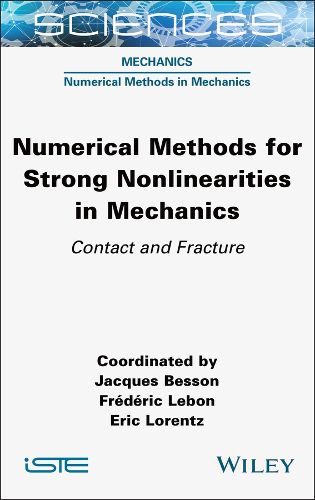Readings Newsletter
Become a Readings Member to make your shopping experience even easier.
Sign in or sign up for free!
You’re not far away from qualifying for FREE standard shipping within Australia
You’ve qualified for FREE standard shipping within Australia
The cart is loading…






Numerical Methods for Strong Nonlinearities in Mechanics deals with recent advances in the numerical treatment of contact/friction and damage phenomena. Although physically distinct, these phenomena both lead to a strong nonlinearity in the mechanical problem, therefore limiting the regularity of the problem, which is now non-differentiable.
This has two direct consequences: on the one hand, the mathematical characteristics of the problem deviate from wellestablished forms, requiring innovative discretization schemes; on the other hand, the low regularity makes it particularly difficult to solve the corresponding large-scale algebraic systems robustly and efficiently. In addition, neither the uniqueness, nor the existence of solutions, remain assured, resulting in bifurcation points, limit loads and structural instabilities, which are always tricky to overcome numerically.
$9.00 standard shipping within Australia
FREE standard shipping within Australia for orders over $100.00
Express & International shipping calculated at checkout
Numerical Methods for Strong Nonlinearities in Mechanics deals with recent advances in the numerical treatment of contact/friction and damage phenomena. Although physically distinct, these phenomena both lead to a strong nonlinearity in the mechanical problem, therefore limiting the regularity of the problem, which is now non-differentiable.
This has two direct consequences: on the one hand, the mathematical characteristics of the problem deviate from wellestablished forms, requiring innovative discretization schemes; on the other hand, the low regularity makes it particularly difficult to solve the corresponding large-scale algebraic systems robustly and efficiently. In addition, neither the uniqueness, nor the existence of solutions, remain assured, resulting in bifurcation points, limit loads and structural instabilities, which are always tricky to overcome numerically.